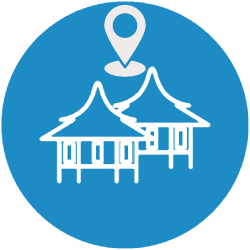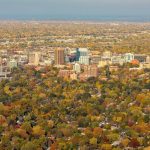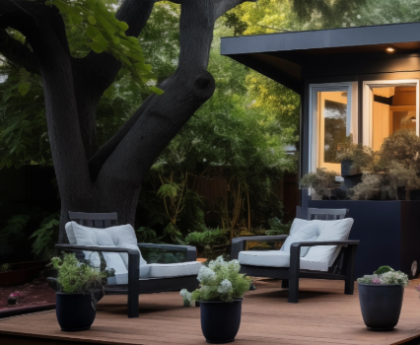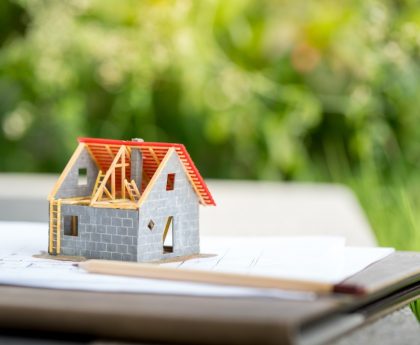SAN DIEGO —
San Diego is falling far short of its goals for new housing construction despite a wide range of developer incentives and regulatory rollbacks in recent years, a new report says.
Housing production must more than triple for the city to meet its state-mandated goal of 108,000 new units by 2029. And the problem is particularly bad with low-income and moderate-income housing.
San Diego is nearly on pace for construction of market-rate housing for people with higher incomes. But the pace of construction of low-income and middle-income units must be 15 times faster than in 2021 and 2022.
Another concern raised in the 11-page report is that new housing isn’t being spread into more areas of the city. More than half of new homes approved during 2022 were concentrated in just three neighborhoods: Mira Mesa, North Park and downtown.
City officials said there’s some good news in that trend, stressing that city incentives encourage such clustering so that more people will live in neighborhoods with relatively strong transit options.
They said the report makes it even more imperative for the city to approve more incentives such as those proposed by Mayor Todd Gloria in his Housing Action Package 2.0.
The package, which was narrowly rejected by the council Nov. 13, is scheduled for another council hearing Dec. 12.
Critics say that instead of adopting more incentives that don’t make much impact, city officials should analyze why the existing incentives aren’t working.
Some have suggested a vacancy tax that would encourage land owners to pursue housing projects by taxing them annually based on the number of units that could be built on their property.
One bright spot in the analysis, called the city’s 2023 Annual Report on Homes, is that the number of housing units approved rose year over year, from 5,032 units in 2021 to 5,314 in 2022.
But city officials noted that still leaves San Diego more than 97,000 units short of the 108,000 required in the city’s state Regional Housing Needs Allocation covering April 2021 through April 2029.
That means annual production would immediately have to more than triple to more than 16,000 units per year and stay that high for six years — a pace the city hasn’t achieved in recent memory. Between 2010 and 2020, the city averaged about 4,200 new housing units per year.
Another reason for concern is the dwindling effectiveness of two key incentives — density bonuses for market-rate projects that include some rent-restricted units, and incentives for backyard apartments called accessory dwelling units.
Only 651 ADUs were permitted in 2022, down 25 percent 2021. The neighborhoods where the most ADUs were permitted in 2022 are Clairemont, North Park, City Heights, the College Area and Southeastern San Diego.
The number of homes approved under the density bonus program also fell between 2021 and 2022, with the number of new rent-restricted units approved under the program dropping by 22 percent from 371 to just 290 last year.
City officials said the program, which lets developers build more units than a property’s zoning allows if they agree to include low-income units, has still been effective.
Since the density bonus was enhanced four years ago, the average number of rent-restricted units has been about 300 per year. During the five previous years, the average had been 30 units.
City officials said the report will be presented to the City Council this winter.
When it was presented to the council’s Land Use and Housing Committee on Nov. 16, Councilmember Vivian Moreno said she was most troubled by how far behind pace the city is on building moderate-income housing.
Only 62 total units of moderate-income housing were approved in 2021 and 2022 — less than 1 percent of the 19,319 units the city must build of that type of housing by 2029.
“If we want San Diego to continue to be a place where middle-income residents can live, we need to change this,” she said. “They are the backbone of our workforce.”
The city defines moderate income as between 80 percent and 120 percent of the area’s median income. For a family of three, the range in 2023 is $99,250 to $126,150.
San Diego is also far behind on housing for low-income residents, where only 438 units have been permitted — less than 1.6 percent of the 17,331 required by 2029.
And the city is even further behind on very low-income housing, where 645 units have been permitted — 1.5 percent of the 27,549 required by 2029.
On market-rate housing, the city is nearly on pace. Just over 9,200 total units were approved in 2021 and 2022 — 4,562 units in 2021 and 4,639 units in 2022. That’s 19 percent of the 43,837 such units that must be built by 2029.
The report said 87.3 percent of the housing units permitted in San Diego in 2022 were market rate.
Of the 5,314 new homes permitted in 2022, 1,426 were approved in downtown, which includes Little Italy and the East Village. That was followed by 735 in North Park, 555 in Mira Mesa and 305 in Linda Vista.
For rent-restricted units permitted in 2022, the leading neighborhoods were Linda Vista with 192, Rancho Bernardo with 175 and the eastern suburban neighborhoods designated by the city as Navajo with 123.
Councilmember Joe LaCava acknowledged the report was disappointing, but he said the city can only do so much and must hope that developers start to move more quickly.
He also praised city officials for keeping the council aware of progress and challenges.
“Producing these kinds of reports is invaluable to understanding what’s happening on the ground,” he said. “Every time we do a snapshot like this, it gives us more information to say whether the programs are working.”




